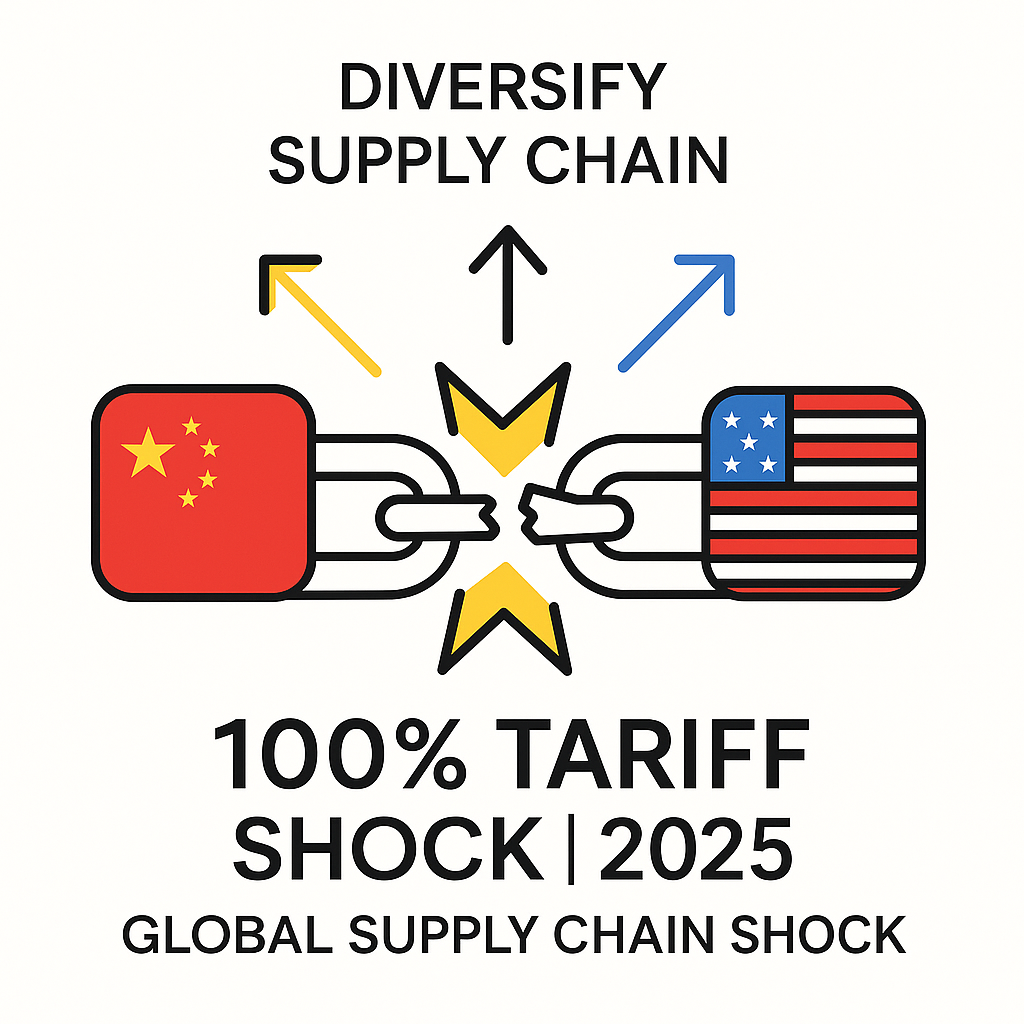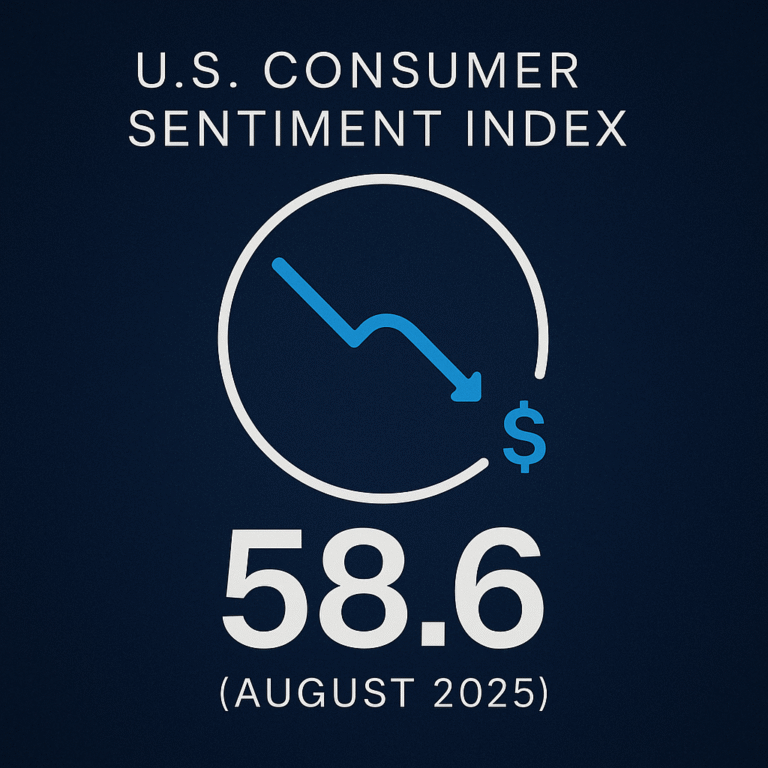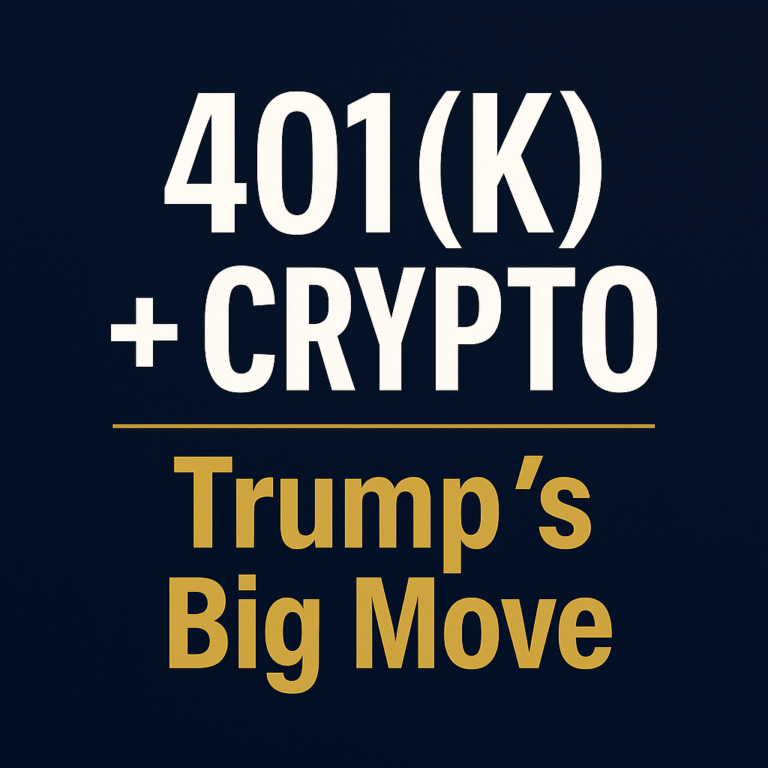U.S.–China Trade Tensions 2025: How Trump’s 100% Tariff Plan Could Disrupt Global Supply Chains
Trump’s 100% tariff plan reignites U.S.–China trade tensions in 2025, threatening global supply chains and reshaping investor strategies.
Key Takeaways
✔ Trump’s 100% tariff plan sparks renewed U.S.–China trade tensions in 2025.
✔ China warns of retaliation through rare-earth export restrictions and higher port fees.
✔ Tech and manufacturing stocks tumble as supply-chain disruption fears grow.
✔ Investors shift toward safe-haven assets amid inflation and policy risk.
The Return of the U.S.–China Trade War in 2025
In October 2025, former President Donald Trump announced a sweeping 100% tariff on Chinese imports, reviving a trade confrontation many thought was over.
China responded immediately, warning of rare-earth export restrictions and retaliatory port fees on U.S. ships.
This latest escalation goes beyond a tariff dispute. It represents a structural shift in U.S.–China economic relations, extending into technology, energy, and critical-material supply chains. Investors worldwide are now reassessing exposure to both markets as policy risk becomes a central investment variable.
The Data Behind the U.S.–China Tariff Shock
Key economic indicators highlight the scale of disruption caused by Trump’s 100% tariff threat.
|
Indicator |
Latest Change |
Implication |
|---|---|---|
|
China’s exports to the U.S. |
↓ 27% YoY (Sep 2025) |
Immediate trade contraction under tariff pressure |
|
Rare-earth exports |
↓ 31% MoM (Sep 2025) |
National-security-based export limits tighten supply |
|
U.S. tariff revenue (YTD) |
$88 billion |
Fiscal boost but inflationary for consumers |
|
Consumer price pass-through |
61–80% |
Most tariff costs passed to end buyers |
|
Dollar index |
↓ ~7% YTD |
Risk aversion and capital outflows weakening USD |
These metrics show that U.S.–China trade tensions 2025 affect not just trade balances but also inflation, currency stability, and manufacturing output across the globe.
Expert Insights: Why Analysts Warn of Long-Term Economic Damage
BlackRock estimates that if Trump’s 100% tariff plan takes effect, the U.S. effective tariff rate could exceed 25%, cutting GDP growth by 0.3–0.5 points.
A CSIS study warns that China’s rare-earth export restrictions could destabilize semiconductor and EV manufacturing for years.
Reuters notes Beijing is using “national security” to justify controls while keeping diplomatic flexibility.
Together, these analyses suggest the 2025 trade war may trigger a multi-year global supply-chain realignment, with higher costs and slower growth as collateral damage.
Sector Impact: Tech, Manufacturing, and Energy Face the Heat
Technology & Semiconductors
Tighter rare-earth export restrictions threaten AI chips, batteries, and clean-tech components.
Since the U.S. lacks refining capacity, rebuilding domestic production will take years—raising import dependency risks and costs.
Automotive & Industrial Manufacturing
U.S. carmakers like GM and Ford face higher input prices as tariffs hit metals and EV batteries.
Many firms are accelerating China+1 production moves to Mexico and Southeast Asia to maintain competitiveness.
Energy & Critical Materials
China’s export licensing now covers seven key elements essential for renewable-energy technology.
Countries such as the U.S., Australia, and Brazil are racing to develop alternative mining projects, signaling a new phase in the global race for critical minerals.
Global Supply-Chain Rewiring: From “China+1” to “China+N”
The U.S.–China trade tensions 2025 have pushed multinational firms to diversify production beyond China.
Vietnam, India, and Mexico are emerging as manufacturing hubs attracting record foreign direct investment.
Yet full decoupling remains unrealistic. China still dominates in component integration, efficiency, and logistics infrastructure.
The likely outcome is China+N diversification—spreading supply-chain risk while maintaining limited ties to the Chinese ecosystem.
Market Reaction: Tech Stocks Slide, Safe-Haven Assets Surge
Financial markets priced in the tariff threat immediately.
The Nasdaq and S&P 500 both dropped over 2% in a day, while volatility jumped—the VIX Index crossed 20.
Meanwhile, investors rotated into U.S. Treasuries and gold, reinforcing a risk-off environment as fears of global supply-chain disruption intensified.
Investor Playbook: Navigating the 2025 Tariff War
Short-Term Defense
- Prioritize gold, T-bills, and TIPS to hedge volatility.
- Keep liquidity high until tariff timelines clarify.
- Track upcoming Fed statements and U.S.–China negotiation updates.
Mid-Term Strategy
- Focus on supply-chain diversification ETFs (semiconductors, logistics, automation).
- Consider exposure to India, Vietnam, and Mexico through regional funds.
- Use private-sector data (ISM, S&P Global PMI) while government stats lag amid the shutdown.
Long-Term Opportunities
- Invest in AI, clean energy, and advanced manufacturing—sectors resilient to tariff shocks.
- Explore companies developing critical-mineral infrastructure outside China.
- Seek firms emphasizing ESG resilience and supply-chain transparency.
What’s Next: Possible Scenarios for U.S.–China Trade Relations
- Scenario 1 – Negotiated Pause: Both sides reach a limited deal before the November 1 deadline.
- Scenario 2 – Full Implementation: Tariffs take effect, and China retaliates with rare-earth bans and higher port fees.
- Scenario 3 – Political Volatility: The U.S. election cycle keeps trade policy uncertain into 2026.
- Scenario 4 – Cold War 2.0: The dispute expands into technology, energy, and national-security spheres, creating a multi-year decoupling process.
Each outcome carries distinct implications for investors, from inflation spikes to equity rotation and supply-chain realignment.
Trump’s 100% tariff plan marks a defining moment in U.S.–China trade tensions 2025.
The policy could reshape global manufacturing, intensify inflationary pressures, and test the resilience of international markets.
For investors, success in this environment depends on agility, diversification, and a long-term strategy that transforms uncertainty into opportunity.
References
- China warns U.S. of retaliation over Trump’s 100% tariffs threat — The Guardian
- Beijing defends rare-earth export curbs as legitimate — Reuters
- China’s exports to the U.S. drop in September amid tariff escalation — AP News
- China steps up rare-earth export controls citing national security concerns — The Guardian
- U.S. and China reignite trade war with focus on rare earths and tariffs — Le Monde
- Short-Run Effects of 2025 Tariffs So Far — Yale Budget Lab
- Global Supply Chain Reallocation under Triple Crises — arXiv
- U.S.–China Trade Policy Tracker 2025 — CSIS
- Assessing the Impact of Escalating Tariffs — BlackRock Institute







